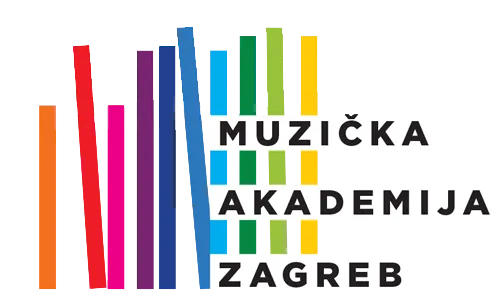- Academy
- About us
- Mission, vision, and strategy
- Directorate and administrative services
- Departments, professors, and associates
- I. COMPOSITION AND THEORY OF MUSIC DEPARTMENT
- II. MUSICOLOGY DEPARTMENT
- III. CONDUCTING, PERCUSSION AND HARP DEPARTMENT
- IV. VOICE DEPARTMENT
- V. PIANO, ORGAN AND HARPSICHORD DEPARTMENT
- VI. STRING INSTRUMENTS AND GUITAR DEPARTMENT
- VII. WIND INSTRUMENTS DEPARTMENT
- VIII. MUSIC PEDAGOGY AND TAMBURITZA DEPARTMENT
- GENERAL EDUCATION COURSES
- Professors and associates
- Access to information
- Quality management
- Business
- Job openings
- IT Support
- Alumni Association of the Academy of Music
- All news
- Students
- Student affairs
- Student support tools
- Student union
- Psychological support
- Career Center
- Doors Open Day
- Programmes
- Study programmes
- Lifelonglearning courses
- Events
- Projects
- Production
- Library
- About
- Online Catalogue
- Repositories
- Databases and other electronic resources
- Bach 370 Chorales
- CPDL – Choral Public Domain Library
- CroRIS – Informacijski sustav znanosti RH
- Grove Music Online
- HRČAK Portal of Croatian scientific and professional journals
- IMSLP – International Music Score Library Project
- MGG Online – Musik in Geschichte und Gegenwart
- Neue Mozart Ausgabe Online
- Electronic Resources Portal for the Croatian academic and research community
- Portal of older Croatian Periodicals
- Libraries containing music collections
- News
- International Cooperation
- Publishing
- Contact
Horizontal mobility
Horizontal mobility refers to the opportunity for students to enroll in individual courses from other study programs within the University during their primary studies, which are not offered in their program, with recognition of passed exams and earned ECTS credits. This form of mobility allows students to enrich their education and tailor it to their own interests and professional goals. Horizontal mobility is an important element of modern university education, enabling students to expand their knowledge and skills and better prepare for the challenges of professional life. The goal of horizontal mobility is to encourage interdisciplinarity, specialization, innovation, and flexibility in education, as well as the acquisition of knowledge from various fields, which increases competitiveness in the labor market and contributes to the quality and attractiveness of university programs.
Rules for implementing horizontal mobility:
- a student of the Academy may, in accordance with the study program, enroll in individual courses from other study programs within the University that are not offered in their own program. Enrollment in courses, based on the student’s request, is approved by the vice dean for teaching, with the consent of the ECTS coordinator or another authorized body of the faculty offering the selected course, as well as the course professor.
- on granting approval, the vice dean for teaching issues a formal certificate stating the name of the course and its credit value (number of ECTS credits). The ECTS credits earned may be recognized as if they were obtained within the student’s primary study program and are recorded in the diploma supplement. The credit value of the course corresponds to the value assigned to that course within the program in which it is offered.
- the number of students who can enroll in a particular course is limited by the capacity of the faculty offering the course, with the decision made by the competent body of that faculty based on the course professor’s proposal.
- the course that the student attends at another faculty is entered into the information system. The course professor confirms the completion of study obligations by entering the ECTS credits and grades into the information system. ECTS credits earned in another study program are verified by submitting an officially certified transcript of grades (ECTS credits) or through another appropriate method.
